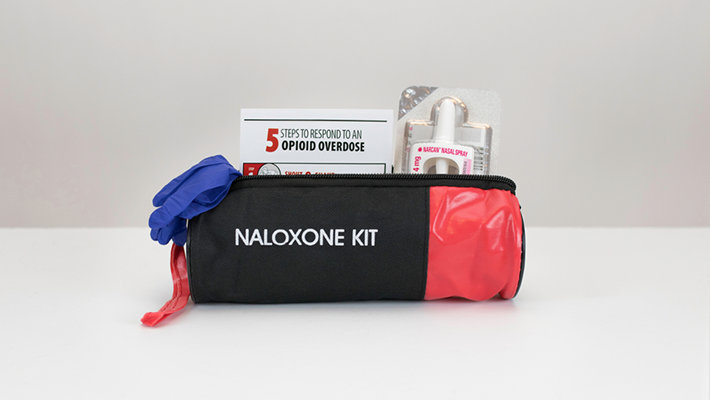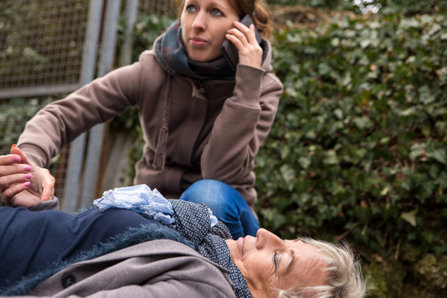Naloxone—Does It Help Us or Hinder Us?

Naloxone. This is the overdose reversal medicine, the injection or nasal spray which can bring an overdosing addict back from the brink of death. Naloxone truly is a miracle of modern medicine, but one might be surprised as to the controversy over the drug. There are those who feel that the existence of naloxone makes addicts bolder, more likely to try hard drugs, because “Someone will be there to save me with naloxone if I overdose.”
So where should we stand on naloxone? Does naloxone help us or hinder us?
We should stand somewhere in the middle. On the one hand, we cannot use naloxone as the “solution” to the epidemic (naloxone is not a solution to addiction). But on the other hand, naloxone does save lives. Anything that saves lives should earn some recognition. When we go too far with naloxone and use it as a bandaid approach to “address the addiction epidemic” we take our eyes off the goal. The goal is to actually help people get off of drugs. We can't let the use of naloxone distract us from that.
The medical community strongly supports naloxone. Not only has naloxone been endorsed by many medical professionals across the country, but the medicine is also publicly supported by the highest-ranking medical expert in the nation, the Surgeon General. In the words of the United States Surgeon General, Dr. Jerome Adams:
“I, Surgeon General of the United States Public Health Service, VADM Jerome Adams, am emphasizing the importance of the overdose-reversing drug naloxone….”
“I, Surgeon General of the United States Public Health Service, VADM Jerome Adams, am emphasizing the importance of the overdose-reversing drug naloxone. For patients currently taking high doses of opioids as prescribed for pain, individuals misusing prescription opioids, individuals using illicit opioids such as heroin or fentanyl, health care practitioners, family and friends of people who have an opioid use disorder, and community members who come into contact with people at risk for opioid overdose, knowing how to use naloxone and keeping it within reach can save a life.”
A lot of what Dr. Adams is saying makes sense. But again, we need to be cautious with naloxone. We can't go overboard with this medicine and make it into a “solution” to the opioid epidemic. Naloxone is simply a medicine which pulls addicts out of an overdose. Let's not make naloxone into something it isn’t. The Surgeon General would do well to support the treatment of opioid addicts with residential drug and alcohol rehab centers as much as he does naloxone. It’s a two-part process. Save addicts from an overdose death by administering naloxone, and then take them to a residential addiction treatment center as soon as a medical doctor has checked them out and determines them fully recovered from the overdose.
What Are the Facts and Statistics on Naloxone?
Most people don’t know it, but naloxone has saved tens of thousands of lives just since the mid-1990s. According to a report published by the National Institute on Drug Abuse, from 1996 to 2014, it is estimated that at least 26,500 opioid overdoses across the United States were reversed by laypeople administering naloxone.
NIDA estimates that, while medical responders are the individuals most likely to use naloxone on an overdosing patient, there is a growing percentage of American laypeople who keep the medicine on hand and who have had to use it.
Just one naloxone program in Massachusetts reduced opioid overdoses by 11 percent in 19 different communities. The positive influence of one naloxone distribution group can be quite significant.
However, as with any medication, Naloxone can have some serious side effects including seizures in infants, so training and safe storage are necessary to ensure that no one else is harmed in the rush to save lives.
At the time of this writing, 36 states and the District of Columbia have passed “Good Samaritan” laws. This means that bystanders, family, and friends who seek out or perform medical aid on someone experiencing an opioid overdose are themselves protected from any legal or criminal investigation which might come after.
Naloxone is a medicine that can save lives and give addicts a second chance. We need to support the use of this medicine, and we should ourselves get educated on its use and application. But at the same time, we need to spend just as much time and effort if not more so working to get the addicts we save into treatment. That is what will really help them get better.
Naloxone Is Not Yet as Accessible as It Should Be

According to the same NIDA report mentioned above, 1 in 5 patients receiving opioid pain relievers for chronic pain had experienced an overdose at one point. Forty percent of them had witnessed an overdose, yet only 3% of them ever had access to naloxone or had ever been trained in its use.
According to a U.S. News article on the same issue, 98.5 percent of 138,108 individual cases examined found an opioid patient at high-risk for overdose who had not been given a prescription for naloxone. That has to change. It is imperative that this life-saving medicine is made available to the public.
The U.S. News article cites research done by the University of Chicago Medicine. Their full research paper can be found in the U.S. National Library of Medicine archives.
What Comes after the Administration of Naloxone?
After an overdosing addict is saved from the brink of death with a dose of naloxone, now what happens? The next step is to ensure that your family member or loved one gets into a residential drug and alcohol addiction treatment center. This is crucial.
A survived overdose is a scrape with death, a moment when the addict almost lost everything. It is a life or death moment. When an addict is pulled out of that with naloxone, they are quite likely to have a “Coming to Jesus” moment if you will. It is a wakeup call, to survive an overdose. It is at this moment that an addict is most likely to agree to enter into a drug and alcohol addiction treatment center.
Immediately after administering naloxone to an overdosing addict, the next step is to take the individual to a hospital. We have to be sure their vitals are in order, and we need hospital staff to determine if any further medical care is required. But before the individual is discharged from the hospital, take the time, effort, and energy needed to convince the addict to check into a residential rehab immediately after hospital discharge. Even go so far as to set up intake into a residential treatment facility for him.
This is the correct procedure for utilizing naloxone. The end goal has to be getting the addict into treatment.
Where Do We Need to Be Cautious with Naloxone?

We cannot use naloxone to solve the addiction problem. We cannot adopt this idea that “Well, now we have an emergency medicine which can save addicts from overdoses. Now that we have that, we don’t really need to work so hard to address the addiction epidemic. We can relax a bit. We can save their lives when they overdose. That’s all that really matters.”
We cannot adopt that viewpoint. As discussed in the previous section, naloxone should only be used as emergency medicine to rapidly save a person’s life. What comes after needs to be every possible effort to get that addict into a residential drug and alcohol addiction treatment center.
If you know someone who is struggling with an addiction to opioid drugs, keep naloxone on your person, in your home, and in your car. You might consider this even if you don’t know someone who is addicted.
If you know someone who struggles with a drug habit, you should spend a few minutes getting familiar with how to use naloxone. But then you should spend time every day trying to convince your friend or loved one to get clean. Naloxone saves lives—for the moment. Rehab saves lives—for a lifetime.
Sources:
- https://www.surgeongeneral.gov/priorities/opioid-overdose-prevention/naloxone-advisory.html
- https://www.drugabuse.gov/publications/naloxone-opioid-overdose-life-saving-science/naloxone-opioid-overdose-life-saving-science
- https://www.ncbi.nlm.nih.gov/pubmed/31050777
- https://www.webmd.com/drugs/2/drug-4082-1617/naloxone-injection/naloxone-auto-injector-injection/details


 ®
®